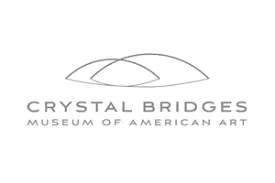
Native American Art Receiving Broad Reassessment In Museums Across U.S.
By Chad Scott
Forbes
November 21, 2018
November is Native American Heritage Month. Coinciding with the celebration, art enthusiasts will find a wide-ranging reassessment of Native art across the country.
This reassessment starts at the top. For the first time in it’s history, the Metropolitan Museum of Art in New York showcases Native works in its American Wing which dates back to 1924.
Art of Native America: The Charles and Valerie Diker Collection showcases 116 works from 50 cultures across North America with particular strengths in sculpture from British Columbia and Alaska, California baskets, pottery from southwestern pueblos, Plains drawings and regalia, and rare accessories from the eastern Woodlands according to The Met.
“The American Wing of the Met is an ideal space to exhibit this particular collection,” Ned Blackhawk, professor of history and American studies at Yale University, said in a video produced by The Metropolitan Museum of Art when announcing the show. “The art of the indigenous peoples of North America have not historically been prioritized in these spaces. The longstanding territorial practice of designating arts as ‘primitive’ or ‘ethnographic’ or as ‘non-Western’ has limited our capacity to see a broader and more shared humanity.
“I would like to think that the Diker Collection is the beginning of a major, if not radical, reorientation of–not just the Met–but other American museums commitments to seeing past a limited vision of what it means to call something ‘American art.’”
The Met exhibit, which culls its examples from one of the most important collections of Native art in private hands, features work from the second through early twentieth century. At the Crystal Bridges Museum of American Art in Bentonville, Arkansas and at the Toledo Museum of Art in Toledo, Ohio, they are bringing their reassessment of Native American art to the modern day.
“The story of American art, of contemporary art, is incomplete without Native American artists,” Mindy Besaw, curator of Art for a New Understanding: Native Voices, 1950s to Now at the Crystal Bridges Museum of American Art, said. “This exhibition includes a wide range of media, including performance, new media, feature-length films, textiles, painting, sculpture, baskets, and more. We are also highlighting these artists to bring more visibility to their work and encourage a deeper and more meaningful understanding of not only Indigenous art, but contemporary art broadly.
“Native American culture and art is not singular, but informed by so many different factors. Also, Indigenous artists championed cultural revitalization, countering the notion that Native American cultures were frozen in the past.”
The Toledo Museum of Art has increased its efforts to broaden the scope of its acquisitions of singular works of art from cultures traditionally underrepresented in the classical art museum tradition. Examples of those acquisitions can be seen in the museum's Expanded Views: Native American Art in Focus exhibit now on display.
“Native American artists offer crucial and important perspectives,” Dr. Halona Norton-Westbrook, director of curatorial affairs at the Toledo Museum of Art, said. “If society fails to hear these voices, then it fails to embrace a truer and fuller picture of America and all its inherent richness and complexity.
“TMA aims to show that Native American art belongs in the midst of considerations of American art, both past and present. Showing these recent acquisitions in the context of the existing American collection was important in order to demonstrate that Native American art has the power to expand our thinking about how we think about American art overall.”
One look at the quality of the work tells you Native artists, then and now, could more than hold their own with their mainstream contemporaries. So, what took so long for Native artists to receive their due?
“Art world biases for many under-represented groups has dominated the art world for a long time,” Besaw said. “Indigenous artists are facing similar biases regarding inclusion. This is, happily, changing. Indigenous artists are being invited to participate in prestigious international exhibitions and biennials, which is important.”
The art world seems to finally be catching up to where other academic disciplines and the general public has been for years.
“While there certainly has long been both scholarly and popular interest in Native American art and culture, that interest has often been outside of the confines of traditional art history,” Norton-Westbrook said. “Art museums with strong ties to classic understandings of art history have not always made space for Native American art or, when they have, the work that has been shown is often presented in a strictly historical context, and/or, separated from other works of American art.
“In Expanded Views: Native American Art in Focus, TMA sets forth an alternative view point: that Native American art belongs front and center in our thinking about the story of American art, and that Native American art continues to evolve and thrive into the present day.”
Who, specifically, are Native artists to keep an eye on if you’re new to the genre? Norton-Westbrook named Wendy Red Star, Marie Watt, Shan Goshorn, James Lavadour, and D.Y. Begay. Besaw mentioned Oscar Howe, James Luna, Jaune Quick-to-See Smith, Edgar Heap of Birds, Marie Watt, Shan Goshorn, and Cannupa Hanska Luger.
Art of Native America: The Charles and Valerie Diker Collection at the Met is on display through October 6, 2019. Art for a New Understanding: Native Voices, 1950s to Now at the Crystal Bridges Museum of American Art runs through January 7, 2019 and Expanded Views: Native American Art in Focus at the Toledo Museum of Art can be seen until April 28, 2019.